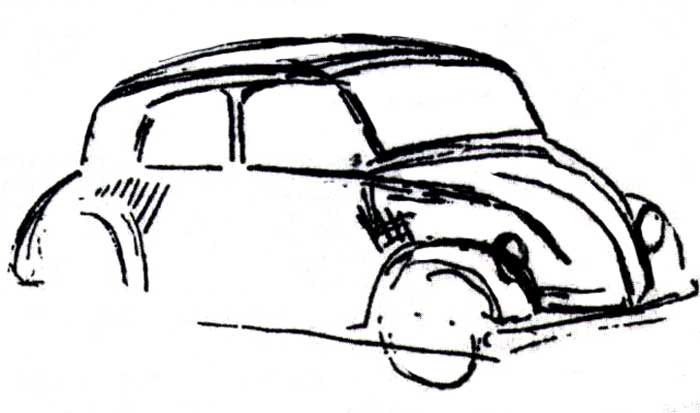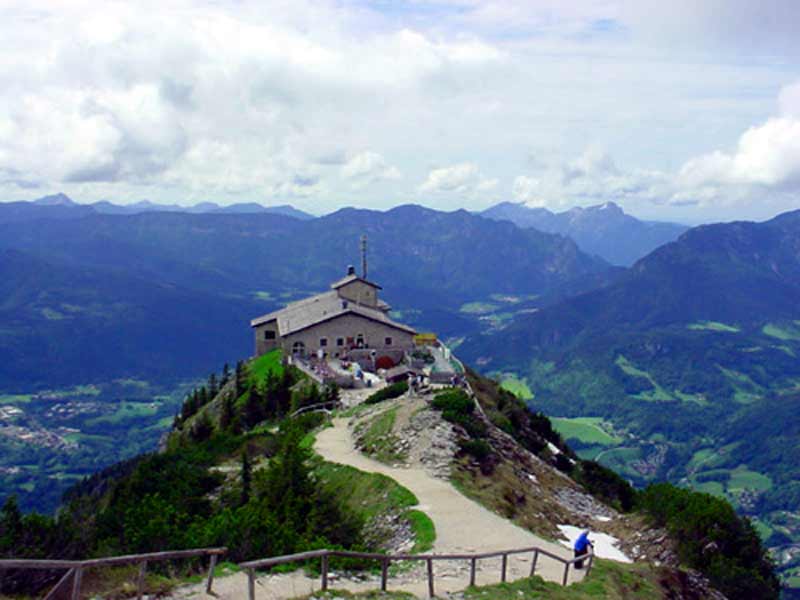Das Kampf
Germany, Hitler and the NazisStudy history, study history. In history lies all the secrets of statecraft. - Winston Churchill After visiting these two places (Berchtesgaden and the Eagle’s lair on Obersalzberg), you can easily understand - John F Kennedy Hitler’s rise to power was enabled by the aftermath of World War I. The Treaty of Versailles had been humiliating, especially since it had forced Germany to accept and admit full responsibility for the war. The treaty also decreed that Germany could station no troops in her industrial heartland; it put a cap on her military size throughout the country; it stripped her of her colonial holdings; it forced her to pay crippling reparations. Due to all this, the Kaiser was exiled. Just as World War I enabled the Communist revolution in Russia, the Treaty of Versailles paved the way for the rise of Hitler and the Nazis. Immediately after the Great War, leftist revolutionaries, called Spartakists caused moderate socialists to side with the conservatives and in 1919 the Weimar Republic emerged – Germany’s attempt to create a democratic system. It was headed by an appointed president with the idea that elections would soon be held, and under the president was a chancellor that the president appointed. The chancellor, unlike vice presidents, had real administrative power and responsibility, and oversaw much more, even, than the president did. The chancellor also was responsible to the Reichstag, a parliament-like legislative body sited in Germany’s capital, Berlin. Liberty, labour, and education were guaranteed by the Weimar Constitution, though it was a rather cumbersome document with over 100 clauses - and a few critical flaws. Among these flaws was the allowance of a large number of political parties, leading to the necessity of forming coalitions to build a majority (proportional representation) – a type of government that can be ineffective if the necessity of maintaining shaky coalitions distracts politicians from getting REAL work done. The most critical flaw, however, was the so-called “Suicide (Emergency) Clause”, Article 48, which allowed the president to fulfill his duties with the aid of armed forces when necessary and also allowed him to abrogate the rights to personal liberty, sanctity of the home, privacy of communications, freedom from censorship, peaceful assembly, formation of societies and private property in a crisis. However, the Reichstag theoretically had the right to revoke these emergency measures. Because of the imprecision of Article 48's wording, it was left to the Reich president himself to determine when a threat to law and order existed. This power had been invoked by the first Weimar president, Friedrich Ebert, to defend the republic against armed attacks. It had, in fact, saved Weimar democracy on a number of occasions. This power of the president to rule in an emergency was enlarged to cover the crisis created by the depression and the failure of the parliamentary parties to form a majority government to deal with the economic difficulties. The president could form a new government composed of a chancellor and cabinet ministers which was not affected by interests of political parties but ruled by emergency decree issued by the president in lieu of laws passed by the Reichstag. Such a government depended on presidential support rather than on the Reichstag. Several forces had converged to create this presidential system. Reich president Paul von Hindenburg, at heart a monarchist, had never fully accepted the republican system of party politics and had come to detest the squabbling of the parties. The president was old (he had been first elected in 1925 at the age of 78) and was easily persuaded by his advisers to pursue new courses when a political stalemate occurred. The president's state secretary, Otto Meissner, and other members of the state bureaucracy favored a more authoritarian system that would be "above parties" and, through the use of emergency powers, was independent of the Reichstag. The army favoured this as well, feeling that the Weimar system, especially due to the pacifistic left, had never created a climate favourable to army growth. The army's political expert, General Kurt von Schleicher, was the foremost exponent of a presidential system - because of his intimate ties to Hindenburg's advisers and Hindenburg himself, he could manipulate the appointment and dismissal of chancellors and cabinets behind the scenes. But Schleicher was not a right-wing fanatic; he wanted to use the presidential system to maintain the life of the republic. It is easy to see in hindsight that the presidential system meant the demise of democratic rule. The Germans were politically inexperienced and to many democracy seemed merely a sham anyway. A more authoritarian system, reminiscent of imperial Germany, was seen as Germany's salvation. In many ways, Weimar democracy ended in 1930 with the establishment of the presidential system as it prepared people for the dictatorial rule of the Nazis. In the 1920s there had been a major economic crisis – how to meet the war debt? France and Britain wanted 2.5 billion marks annually, half of it in gold. The amount of reparations fixed in 1921 was estimated by J M Keynes to exceed by three times Germany's ability to pay. Note: A reason for the prominence given to reparations was their alleged contribution to the runaway inflation of the early 1920s but, in fact, inflation - far from being the consequence of reparations - preceded them. Successive governments seized on it as a means of evading reparations payments, as well as for internal social purposes. No German government before 1923 had made any attempt to stabilise the currency because German industrialists had worked out a system of "inflation profiteering" whereby they obtained short-term loans from the central bank for improvement and expansion of their plants, then repaid those loans with inflated currency. Further, large agriculturists paid off their immense mortgages with the virtually worthless currency. By contrast, those with fixed incomes - broadly speaking, the middle class, were serious victims of inflation, which brought unemployment despite an apparent industrial boom. (And, of course, the poor are losers under almost any system.) Inflation was deeply divisive in its social effects and contributed to lack of confidence in the fledgling republic among many German citizens. When Germany did not/could not pay reparations, France, despite British protests, sent in troops to occupy Germany’s industrial heartland (an action authorised by the treaty). In protest, German workers compounded their economic problems a hundredfold by going on strike. In spite of the existing economic troubles, the government decided that they could create gold out of thin air, and kept paying the striking workers - who were (naturally and patriotically) striking against the evil and hated French. Keeping with what usually happens in such situations, Germany printed more (and more) money, thus devaluing the currency still further. Soon, a single loaf of bread cost millions, even billions of marks. Those rich in goods were protected; those far in debt were aided; the middle class was ruined, forced to spend life savings for a week’s groceries for their families. Discontent against the government grew along with dislike of Jews, who tended to be financiers and bankers. People were trading their most valued possessions just for basic necessities. Somebody had to shoulder the blame. By 1923, there was a general willingness on all sides to compromise as the Allies realised perhaps they had been a bit too heavy-handed with reparation demands. So the US designed a new policy called the Dawes Plan, named for its creator, Charles Dawes (later US vice-president). The Dawes Plan essentially cut France and Britain out of the loop – the US lent Germany money to pay the reparations to France and Britain - who in turn were able to pay off their debts to the US. The US didn’t mind handing out loans as she was in a boom period. Her lax policies of loan collection allowed the German economy to recover to a degree, and to begin to catch up with the rest of Europe. However, in 1929 came the Great Depression, which soon spread throughout the world. The US, now fallen on hard times, not only demanded full repayment from Germany, but demanded it all in gold. (Perhaps Germany would have been better off owing France?) This led to an almost complete drain of Germany's gold supply. German businesses could no longer get financing and unemployment peaked in 1932 with 30% unemployed. These conditions allowed the rise of Adolf Hitler and the Nationalist Socialist German Workers Party, better known as the Nazis.
"The Eagle's Nest"
This eventually led to the “Beer Hall Putsch” (1923) where Nazis took a Bavarian provincial leader hostage in preparation to moving against the Weimar government. With insufficient support for this action, however, Hitler was soon captured and sent to prison, sentenced to five years. Considerable public attention became focused on the trial and gave Hitler the opportunity to establish his name outside of Bavaria. He used the publicity brilliantly to transform defeat into propaganda victory (he was seen by many as a hero) and to ensure for himself the lightest sentence possible for treason. While in prison he used time productively, immediately beginning his major work, Mein Kampf (My Struggle). In this work, he spelled out his belief in the use of propaganda and in establishing racial ideals – two key components for an understanding of Hitler. (Note: Mein Kampf was originally called Four Years of Struggle against Lies, Stupidity, and Cowardice but, fortunately for Hitler, this title was rejected by his publisher.)
In 1930, Germany's increased unemployment had put her system of unemployment insurance into crisis. The government proposed a finance package in response but the measure was defeated. The Chancellor went to the President, the conservative Hindenburg and he imposed the reforms via emergency decree under Article 48. Article 48 had been meant for use only in times when security and public order were seriously disrupted but - as it was never properly defined - it just seemed to be for the purpose of giving the President far-reaching powers. The Social Democrats moved to suspend the decree just passed - so the President dissolved the Reichstag. Elections were held while unemployment was still soaring. Nazis made sweeping gains with smaller gains by Communists. To form a new coalition required right wing "splinter" parties - but the Chancellor knew he could rely on Article 48 so it didn't matter. From that point on, Germany stopped being a parliamentary system and became one ruled by a President through the Chancellor he appointed. In April 1932 Hindenburg's term expired. Despite advancing age, he stood again and, as a "lesser evil", was re-elected - but Hitler had gained 37%. In response to growing Nazi violence, Hindenburg banned the Nazi militia, the SA (the one created by Hitler a decade ago to help him to power). Hindenburg then installed von Papen as the new Chancellor - a reactionary, stupid and arrogant man - but at least he was a fine horseman. von Papen met with Hitler who told him the Nazis would support the new government in exchange for his lifting the ban on the SA. Silly von Papen agreed. Soon, Presidential rule was imposed again - using SA/Communist clashes as a pretext - to give the Chancellor direct control of the police. In the next election, Hitler again made sweeping gains so that the Nazis had a blocking majority in the Reichstag. Hitler broke his promise to support von Papen - causing Germany to once again be ruled by emergency decree. In September, the new Reichstag met and moved to repeal the emergency decree and no-confidence the government. To forestall this, von Papen dissolved the Reichstag - but not before the vote had been counted and it was overwhelmingly against the government. So new elections had to be held again - showing losses for Hitler but gains by the communists; the Reichstag remained deadlocked. By now, Germany was a Presidential dictatorship in which any attempt to oppose emergency decrees by the Reichstag were met by dissolution. von Papen, having lost the support of his cabinet, was forced to resign. Schleicher headed the new government. von Papen, driven by revenge, sought out Hitler - who demanded the Chancellorship. In January, Hindenburg appointed Hitler Chancellor. During the next elections (March 1933), massive intimidation by the SA meant, apart from the Nazis, only Nationalists campaigned. The Prussian police were under Nazi control and employed 50,000 "auxiliary" SA troops to use against any opposition. Nazi opponents were beaten; 50 were killed. Despite this, Nazis only got 43.9% of the vote - but with the Nationalists, they had a majority. Communists were banned and their Riechstag deputies arrested. Next, an enabling act gave dictatorial powers to Hitler's government. At that point, it was all over... Another boost for the Nazis came later, when the Reichstag Building burned to the ground; Hitler immediately used the propaganda machine that he loved to blame the Communists. Possibly due to this, the Nazis gained a plurality in the next parliamentary election. Hitler himself was still only Chancellor, but he used his majority to have laws passed that guaranteed his term for four years and gave him even more power. When Hindenburg died of old age, Hitler became both President and Chancellor and immediately invoked Article 48 and dissolved all other parties. Just as Lenin made the Communist Party inseparable from the Russian government, Hitler made the Nazis indistinguishable from the Weimar Republic. From that point, the German State became the Nazi State. Most people saw what was happening as a good thing – Hitler had charisma, a great, flamboyant speaking style that mesmerized audiences and an able propaganda ministry headed by Josef Goebbels. Hitler essentially seduced the entire country with his vision of German Greatness. All Germany could hear Hitler through radio and see him in the movies. Filmmaker Leni Riefenstahl helped burnish Hitler’s reputation (she only recently died in her 90s). But her art was good propaganda. As an example, Jessie Owens won four gold medals in Berlin in the 1936 Olympics - but Hitler refused to shake his hand because he was black. This was not shown on Riefenstahl’s film of the occasion, however. The Nazis were in complete control over education and government. Book burnings were common and religion was squelched. The Nazi party became the state religion. The First Reich was the Holy Roman Empire, the Second Reich was the era headed by Otto von Bismarck, and now, Germany had the new Third Reich - an empire supposed to last for a thousand years. Rather than causing alarm, many felt that Hitler was accomplishing Germany’s goals, especially since the economy had taken an upswing. This economic success was symbolised by the construction of the Autobahn (the great highway) – an irony since it had been planned under the old Weimar Republic. One way that Hitler wooed Germany was by frequently mentioning Bismarck, one of Germany’s prominent heroes, who, like Hitler, had gained control over most of the country by ignoring the rest of the government. So what if a few laws were swept aside? A chilling indicator of what was to come was the Hitler Youth organisations - Every other youth organisation was shut down, and all youth were forced to join Hitler’s youth organisation. There, the state indoctrinated them in terror tactics, weeding out those who were not useful or who were “weak”. Boys had to form platoons and play war games wherein they were taught to win savagely - to be brutal - as this developed a tougher character. The youth organization was said to be their “true home”. Leadership schools were set up to teach Nazi doctrine, complete with small Storm Trooper uniforms, posters of Hitler, banners and the like. Soon internal patrol forces sprang up to turn in anyone who was critical of the new system, even to the extreme of some children turning in their own parents. Classroom instruction spread hatred for Jews, whose physical traits were described, and some Jewish children were hauled in to be used as examples. Songs had anti-Semitic lyrics. Hitler wanted a master race of Aryan Supremacy – blonde haired and blue eyed. He drew on ideas of Social Darwinism, using racial purity ideals as an excuse to strip Jews of their political rights. Jews were not initially put into concentration camps – first, their businesses were boycotted and interracial marriages were forbidden – even 25% Jewish blood could get you arrested and cause loss of citizenship. By 1935, people began leaving the country. Attacks on synagogues became increasingly common. In 1938 came the Kristallnacht, or the Night of Broken Glass. The Nazi party claimed that a young Jew had killed the German ambassador to France, complaining that his brother was treated badly and forced to be deported to Poland; this led to public outrage culminating in an attack on Jews throughout Germany. Some 1,500 synagogues were attacked, cemeteries were vandalised, shops were trashed, and 20,000 were arrested. Through this, however, only 100-200 Jews were actually killed. Hitler used his power to seize Austria; there was a diplomatic protest, however the British were following a policy of appeasement, hoping to avoid another world war, and so allowed Hitler to seize a little more and a little more; it was for accumulated political reasons such as this that countries eventually joined in the war – it was only afterward that outsiders saw the concentration camps. The Ukrainians were happy to help Hitler because anything was seen as an improvement over the situation in which they found themselves. The Holocaust refers to Nazi Germany's systematic genocide (ethnic cleansing) of various ethnic, religious, national, and secular groups during World War II starting in 1941 and continuing through 1945. The Jews of Europe were the main targets of the Holocaust, in what the Nazis called the "Final Solution of the Jewish Question." The commonly used figure for the number of Jewish victims is six million, so much so that the phrase is now almost universally interpreted as referring to the Jewish victims of the Holocaust, though mainstream estimates by historians of the exact number range from five million to over six million. Other groups deemed "undesirable," especially Slavs (Poles, Russians and others), Rroma (or Roma), Sinti, the mentally or physically disabled, gay men, Jehovah's Witnesses, and political dissidents, were also persecuted and murdered. Taking all these other groups into account, the total death toll rises considerably. The estimates for these victims are unclear, due to the lack of records and the politicized questions around including or excluding non-Jewish victims. Estimates place the total number of Holocaust victims at up to 26 million.
Volkswagen Beetle Lebensraum means “living space”. Hitler felt that once his Master Race was created, Germany would be too small for them all.
World War II was poised to begin…
For more on modern history including both widely-known and little-known facts, opinions (mine and others), a few political cartoons, some photos, a map or two, rants, politicians,
geology, speculation and more, click the "Up" button below to take you to the Index for this History section. |
 Animals
Animals Animation
Animation Art of Playing Cards
Art of Playing Cards Drugs
Drugs Education
Education Environment
Environment Flying
Flying History
History Humour
Humour Immigration
Immigration Info/Tech
Info/Tech Intellectual/Entertaining
Intellectual/Entertaining Lifestyles
Lifestyles Men
Men Money/Politics/Law
Money/Politics/Law New Jersey
New Jersey Odds and Oddities
Odds and Oddities Older & Under
Older & Under Photography
Photography Prisons
Prisons Relationships
Relationships Science
Science Social/Cultural
Social/Cultural Terrorism
Terrorism Wellington
Wellington Working
Working Zero Return Investment
Zero Return Investment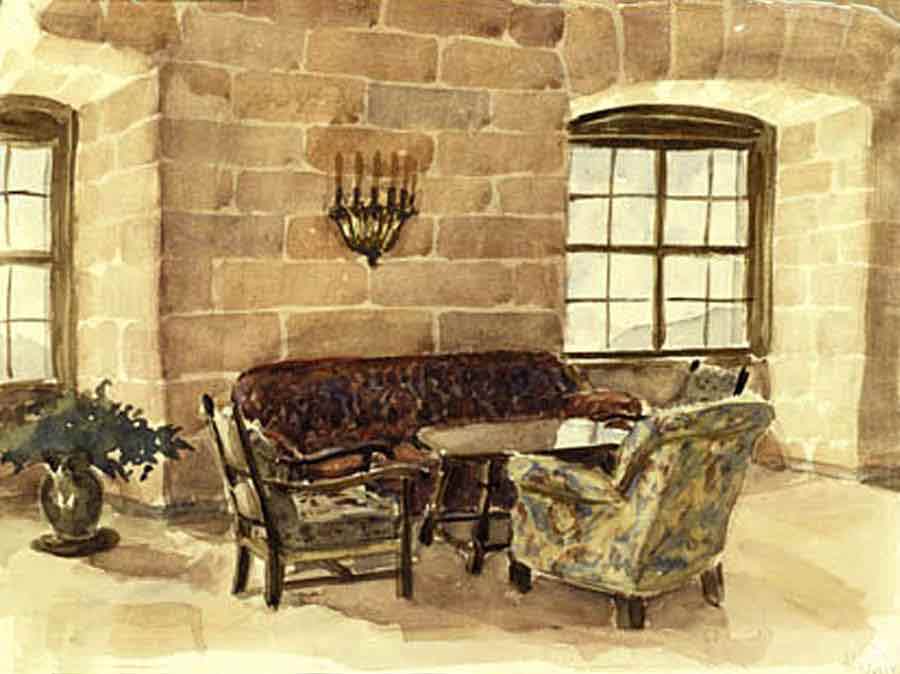
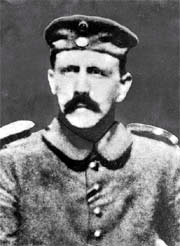 Born in 1889 in Austria, Hitler,
who never finished high school and was rejected by art school for insufficient talent, had been a corporal in the army (photo at left) during World War I, where he heard tales of
unfairness against Germans. He felt Germany had been betrayed. In 1921, he became the “Führer” (leader) of the
Nationalist Socialist (Nazi) Party, one of the smallest and most obscure political parties at that time (only 4 members had been present at the
first meeting Hitler attended, held at a local beer house). The Nazis had plans to capitalise on Germany’s economic calamities and in 1923 Hitler went to the Bavarian capital of
Munich to stage political demonstrations. Hitler was an excellent speaker and managed to convey a sense of determination to restore Germany to greatness. Hitler's use of
rallies, outings, festivals, and cookouts was calculated to fulfill the human need for belonging. The task, as Hitler perceived it, was to
provide the masses with a place where they could find emotional rest. The growth of the Nazi party indicated the strength of his appeal - party membership swelled to 55,000.
Born in 1889 in Austria, Hitler,
who never finished high school and was rejected by art school for insufficient talent, had been a corporal in the army (photo at left) during World War I, where he heard tales of
unfairness against Germans. He felt Germany had been betrayed. In 1921, he became the “Führer” (leader) of the
Nationalist Socialist (Nazi) Party, one of the smallest and most obscure political parties at that time (only 4 members had been present at the
first meeting Hitler attended, held at a local beer house). The Nazis had plans to capitalise on Germany’s economic calamities and in 1923 Hitler went to the Bavarian capital of
Munich to stage political demonstrations. Hitler was an excellent speaker and managed to convey a sense of determination to restore Germany to greatness. Hitler's use of
rallies, outings, festivals, and cookouts was calculated to fulfill the human need for belonging. The task, as Hitler perceived it, was to
provide the masses with a place where they could find emotional rest. The growth of the Nazi party indicated the strength of his appeal - party membership swelled to 55,000.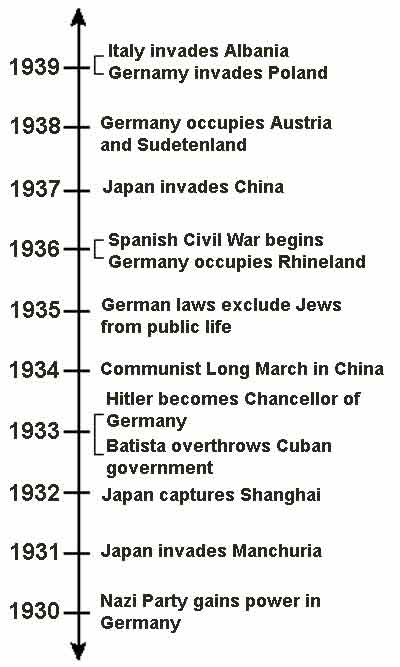 Released from prison after only a year (as
part of a general amnesty for revolutionaries by the Weimar Government), Hitler resolved to seize power through legal means. He borrowed ideology from Lenin, and instated a
strong revolutionary elite guard, the SA (later known as the SS). Gradually, the strength of the Nazi party grew until the 1930s – at which time the depression launched it into
the number two position. In the Reichstag, the Social Democrats were number one, while the Communists were number three - or sometimes
lower. Hitler broadened his base of support to the middle class (who were against big business) and to workers (who felt that the Weimar government was not serving their
interests).
Released from prison after only a year (as
part of a general amnesty for revolutionaries by the Weimar Government), Hitler resolved to seize power through legal means. He borrowed ideology from Lenin, and instated a
strong revolutionary elite guard, the SA (later known as the SS). Gradually, the strength of the Nazi party grew until the 1930s – at which time the depression launched it into
the number two position. In the Reichstag, the Social Democrats were number one, while the Communists were number three - or sometimes
lower. Hitler broadened his base of support to the middle class (who were against big business) and to workers (who felt that the Weimar government was not serving their
interests).